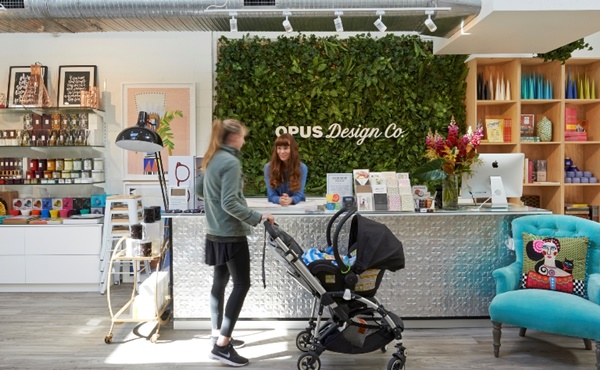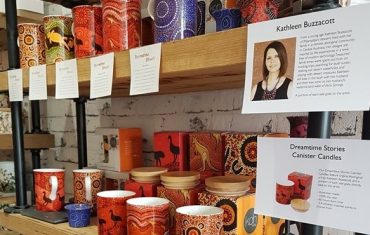The Retail Doctor, Brian Walker, is an ambassador for Shop Small, the nationwide movement that runs through the month of November. Now in its fifth year, Shop Small has always had one simple mission: to encourage consumers to support the hardworking men and women of small business.
According to a new report launched to mark this year’s Shop Small, Australians are still choosing larger retailers over smaller independent businesses. Just 29 per cent of consumers claim to have increased their shopping frequency with small businesses in the past year, compared to 37 per cent in 2016.
It’s no secret that smaller retailers are feeling the heat from larger players, and the gifts and homeware industry is no exception. But just as David conquered Goliath, there are ways and means for smaller retailers to work their size to their advantage—particularly in the lead up to Christmas.
So, in the spirit of Shop Small and the festive season, he has pulled together my top tips for smaller gift retailers looking to get customers through the door and keep them coming back for more.
1 Think ‘phygital’
Around 90 per cent of retail still takes place in physical stores, but in a digital age it’s hard to ignore the value of an online presence. Adopting a digital approach needn’t mean abandoning your business’ physical location and heritage. In fact, marrying up the digital and the physical—a concept dubbed phygital—can bring out the best of both worlds.
More than 54 per cent of small business don’t yet have a website, but it’s the number one feature a shopper values most. First and foremost, get your website up and running. Even if you don’t take orders online, it can help your customers locate your store with ease. In addition, making sure that Google Places has your business address listed correctly is a simple way to help people find you, and can be requested to be updated via Google easily.
We know that customers still crave that relationship with their local retailer. So while you might handle transactions seamlessly with technology, don’t lose sight of that friendly conversation you have with your customers when they come in store. As footfall builds in the lead up to Christmas, ensure your team is fully versed in any payment or stock related technology as well as ready to offer every customer a festive welcome.

2 It’s time to join the social party
Although the report found that 46 per cent of small business owners are using social media as a way of marketing to customers, and a further 24 per cent plan to do so, many still need to be convinced about the benefits of introducing new customer-facing technologies.
Effective use of social media can increase reach, personalise customer interactions and offer another shopfront for your products. But before you jump on the social media bandwagon, you need to develop an authentic online personality, style and tone. By sticking to this consistently, your customers will start to recognise you for you, and confidence in your business and products will grow.
Additionally carefully consider what the most effective channels are for you—concentrate on the most effective channel to reach your customers. Instagram and Facebook lend themselves well to the visual nature of gifts and homewares, but preference doing one channel well rather than trying to do too much.
3 Keep it in the community
Community spirit is alive and well, so much so that consumers expect small businesses to support each other. In fact, two thirds of Australians would recommend a small business to others if it supported other local businesses and 63 per cent would shop at a small business for the same reason.
Perhaps you could showcase gift products in your local coffee shop or restaurant, in return for them handing referring customers? Or use local suppliers to produce your products. You could even sponsor the local sports team in return for marketing to reach a new audience.

The research also found that those smaller businesses who collaborated with three or more businesses most commonly reported increases in sales through referrals, a sense of supporting the local community and customer reach as the biggest benefits.
4 Play to your size
The ability to be agile, customised and innovative is a luxury that many small businesses have over their larger counterparts, so it’s important to make the most of this advantage. You can start by being smart about how you take your business brand to your community—thinking outside the box for ways to engage customers, and responding to what they want and need.
While bigger players might already have their Christmas strategy in place, smaller shops can keep things fresh in the lead up—crafting creative window displays, capturing festive imagery of your products to use on your social channels, and adapting to a customer’s Christmas needs in the moment.
5 Focus on what makes you, you—and back yourself
If you concentrate on what you’re good at and what makes your business unique, your business brand comes naturally. Trust is a big currency now so stand by your products, have warranties and guarantees, and get to know your top 100 customers by name and spend.

One great example of this that I have seen is with Opus Design, a Sydney based gift store on Oxford Street. They believe that continual innovation has been key to their long-standing success. In practice, this has meant developing their own brands and product ranges—which they can then control—and set themselves apart from their competitors.







